Founded in 2016 by Marco Acri, Antonio Di Foggia, and Fabrizio Fasolino, Neapolitan office FADD specializes in interiors “since opportunities to build in Italy are scarce for a young firm like us,” as Acri explains. Among the architects they admire is David Chipperfield, whose work they got to know when their professor at Naples’s architecture school, Alberto Izzo, teamed up with him to build the courthouse in nearby Salerno (1999–2018). At Officine, a new shoe store in the upmarket Via Calabrito, the Pritzker Prize winner’s influence is most keenly felt in the rich material palette, which imbues the project with a strong sense of place.
Previously occupied by Gucci, the 1,700-square-foot, two-story retail space (ground floor and basement) dates from the early 20th century, and features an imposing barrel-vaulted ceiling. “Our client wanted something with both a British and an industrial feel,” recalls Acri, “and gave us ideas and suggestions. We tried following his leads, but he disliked both our first two schemes. At that point we said, ‘Give us the creative freedom to design the store we think would be right.’”
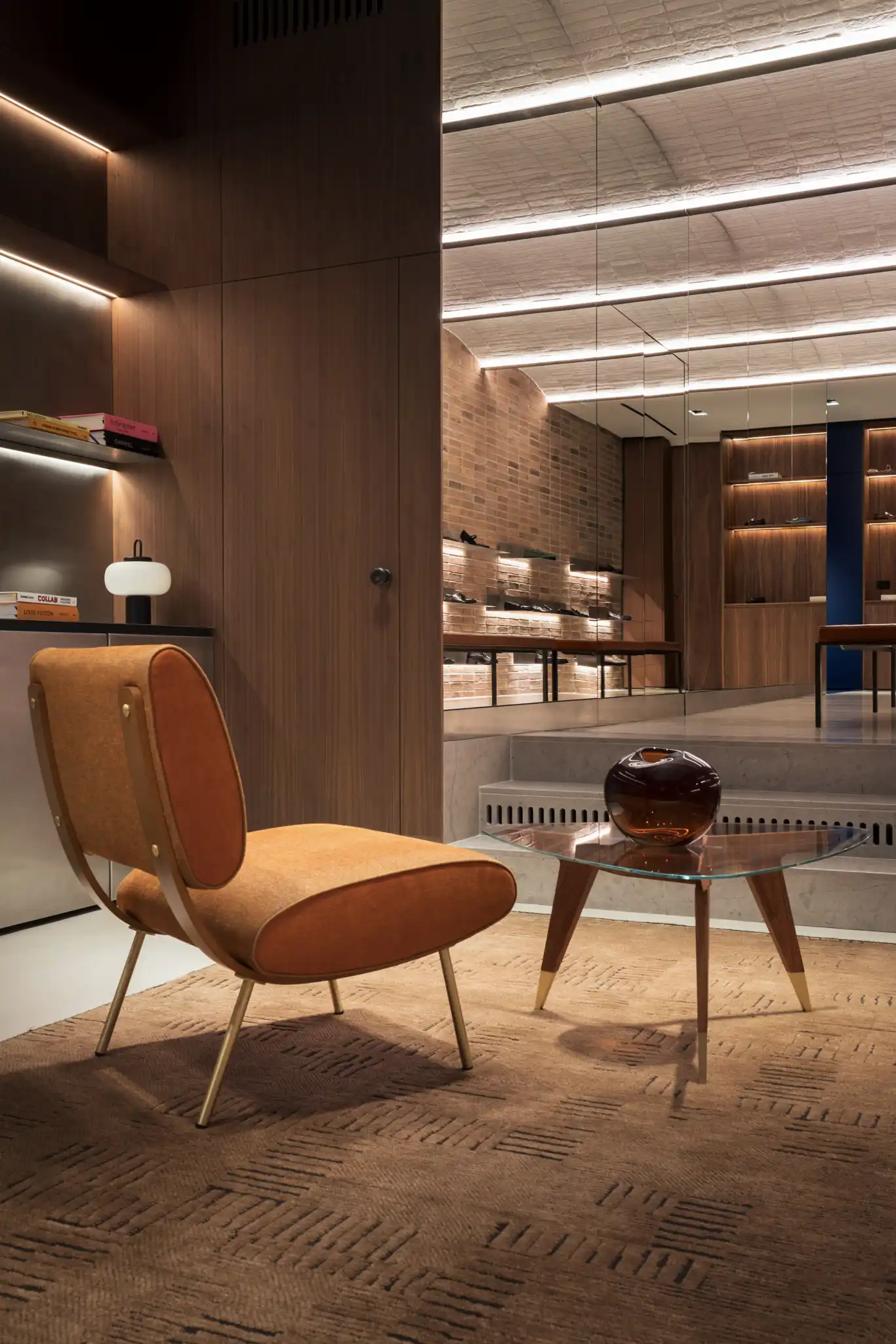
1
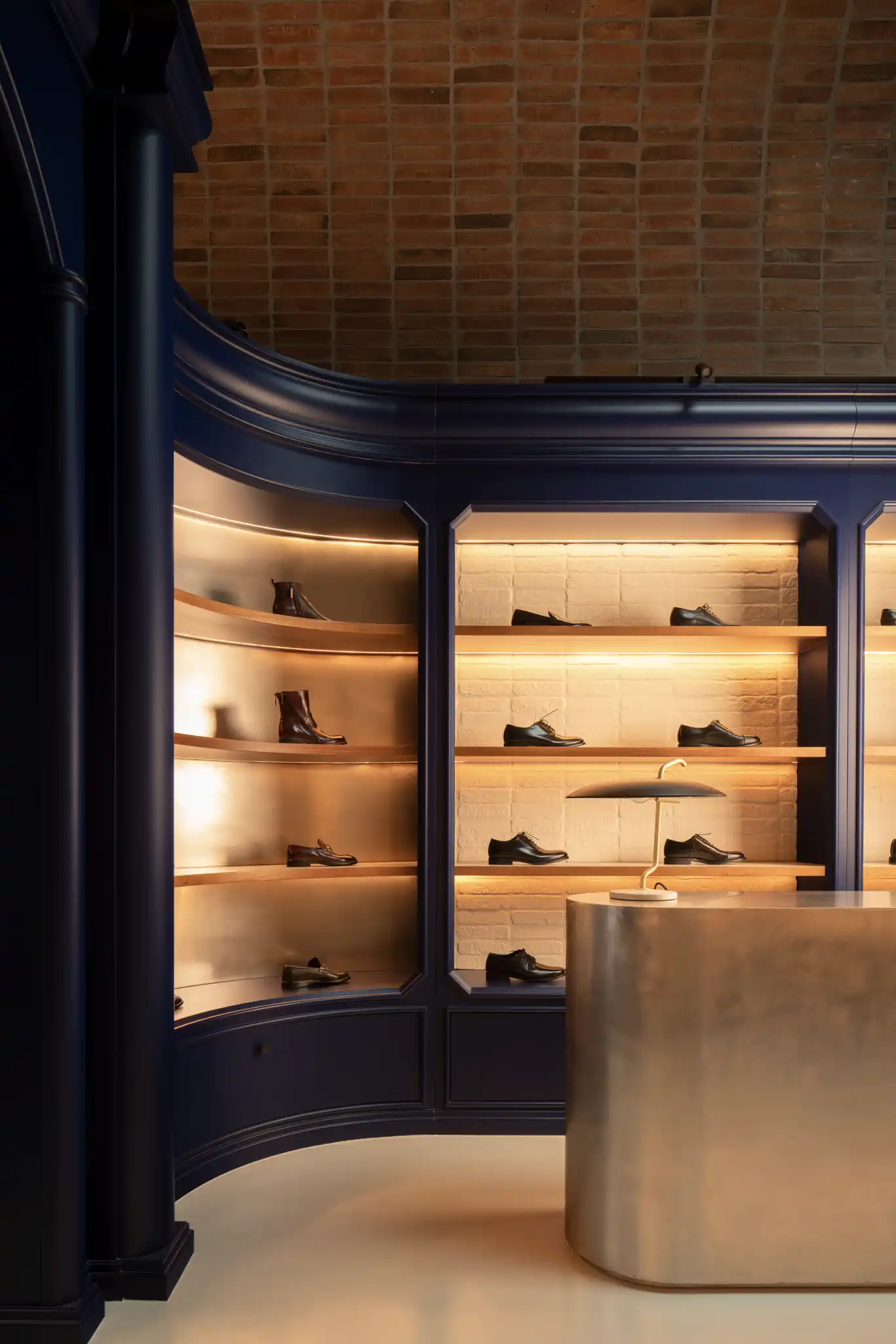
2
Basement level (1) and ground floor (2) of Officine. Photos © Dario Borruto
Two main gestures characterize the project: the use of exposed brick, both upstairs and down, and the Classicizing carpentry that organizes the ground floor both inside and out. Setting the tone, the street front features a column-flanked door that would not seem out of place in Dickensian London, but also recalls historic Neapolitan stores. The same can be said of the wall-mounted shelving encircling the interior, reminiscent of both an English club library and a traditional Italian pharmacy. Storefront and shelves are painted midnight blue, which beautifully sets off the rust-brown Danish bricks—manufactured by Petersen Tegl—with which FADD clad the vault. “While brick is a common Neapolitan material, it’s almost never exposed here,” says Acri. “Leaving it bare, especially inside, evokes northern Europe for us.”
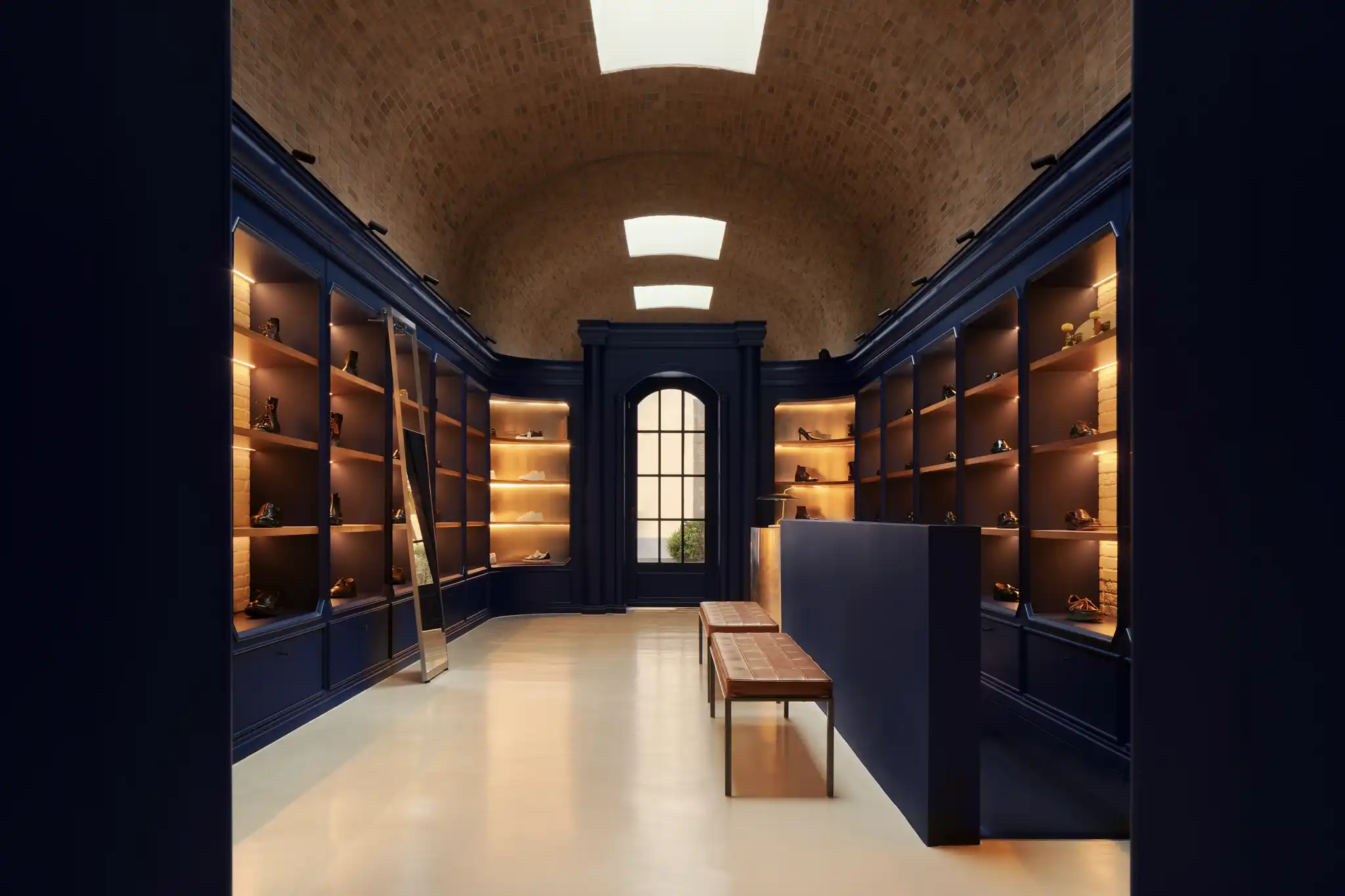
Photo © Dario Borutto
To add a little chiaroscuro, the architects poured a pale resin floor upstairs and used less-expensive local bricks, painted white, to clad the walls behind the shelves. They also designed a bespoke brushed-steel counter and moveable steel-framed mirrors that resemble library ladders—these, along with the brick and the integrated LED lighting, ensure a very contemporary feel. By reopening the skylights that Gucci had covered, FADD ensured views through the barrel vault onto the neighboring historic palace, and, by facing the vault’s tympana with mirrors, created an illusion of infinite space. To gain more floor area, they narrowed the existing staircase, which they also painted midnight blue.
Downstairs, FADD sought a more industrial ambiance, using white-painted brick to create false Catalan vaults, cladding the staircase in mirror, and facing the long wall opposite in Petersen Tegel bricks, which contrast with folded-steel shelves. At either end, walnut carpentry brings a warm, gentleman’s-club touch—indeed, at the far extremity, travertine steps lead down to a cozy, domestic corner furnished with a rug and an armchair. This change in level, Acri explains, is due to the dissimulation of the ventilation ducts under a raised floor: apertures carved into the travertine allow air to enter, while it exits via the dropped ceilings at either extremity of the space. As for upstairs, ducts are hidden from sight behind the shelving cornices.
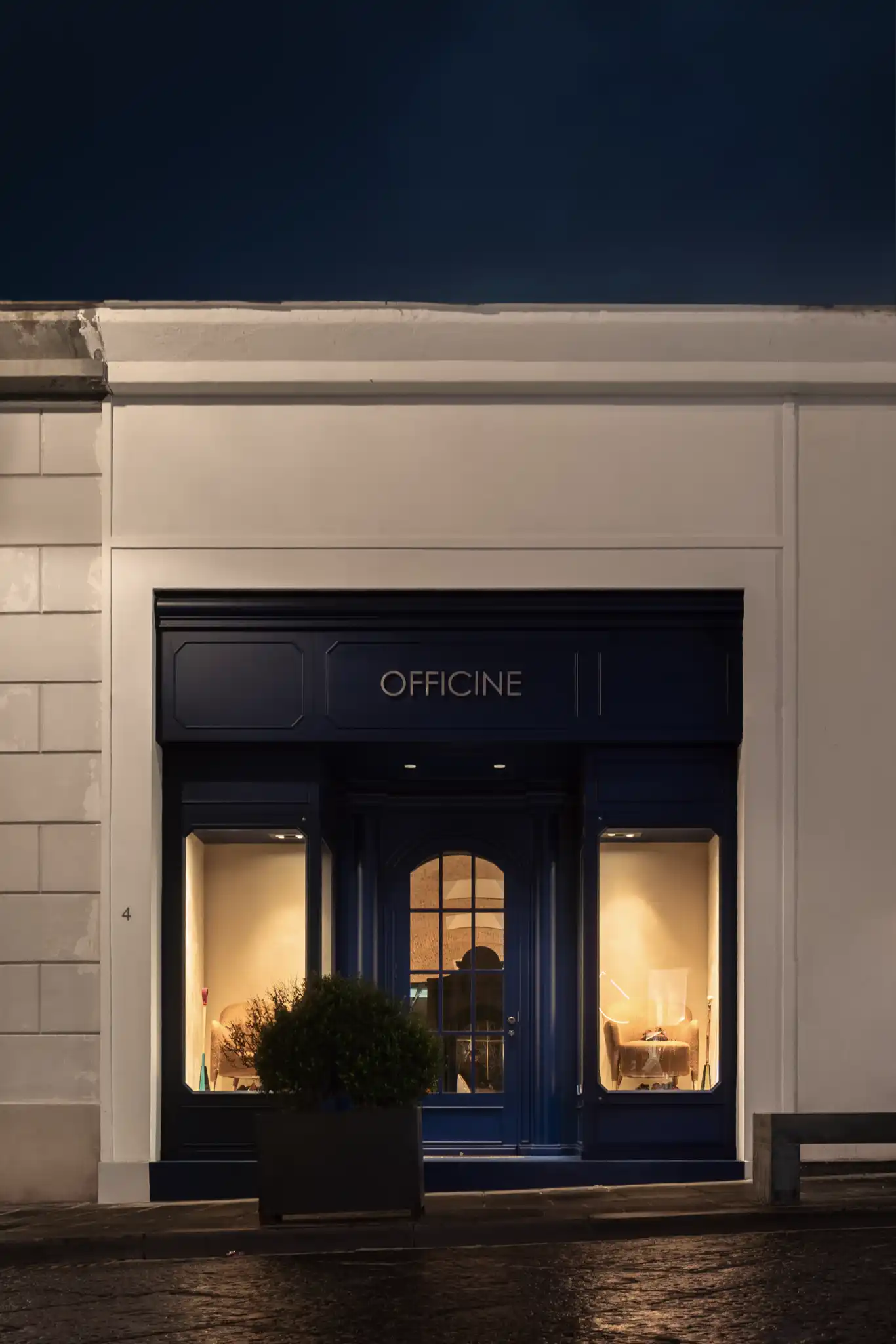
3
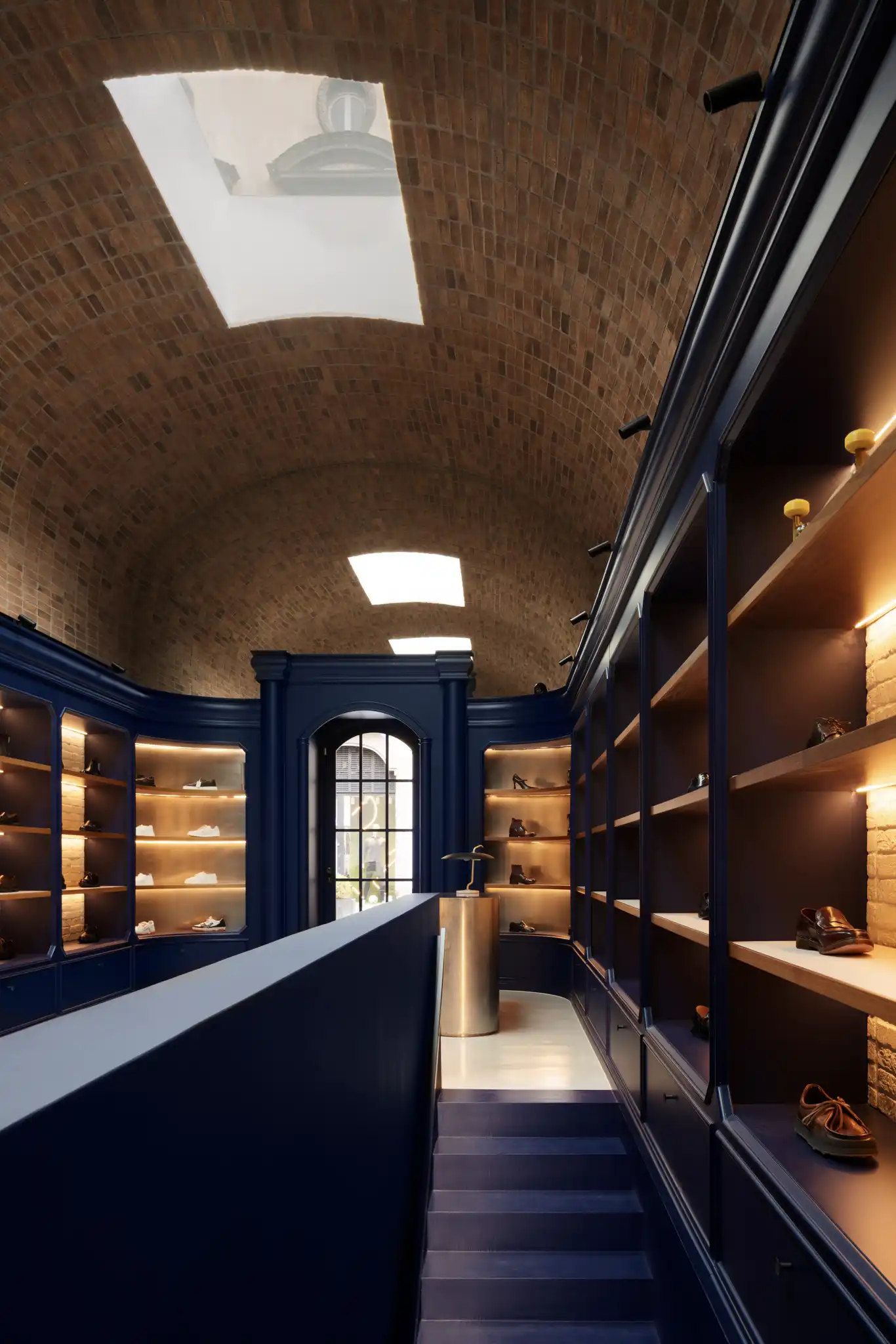
4
Front exterior (3); ground floor with stairs leading down to basement (4). Photos © Dario Borruto
A total-design interior, every square of inch of which is meticulously detailed, Officine is all the more remarkable for the speed with which it was constructed—just five months, since the high-price rent meant there was no time to waste. Quintessentially Italian in its approach to finishes, this sensual collage of colors, finishes, and textures subscribes to an age-old tradition of dressing buildings in exquisitely tailored material surfaces.



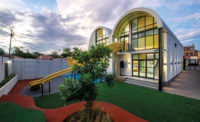
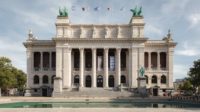
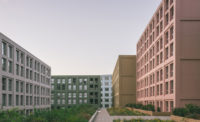
Post a comment to this article
Report Abusive Comment